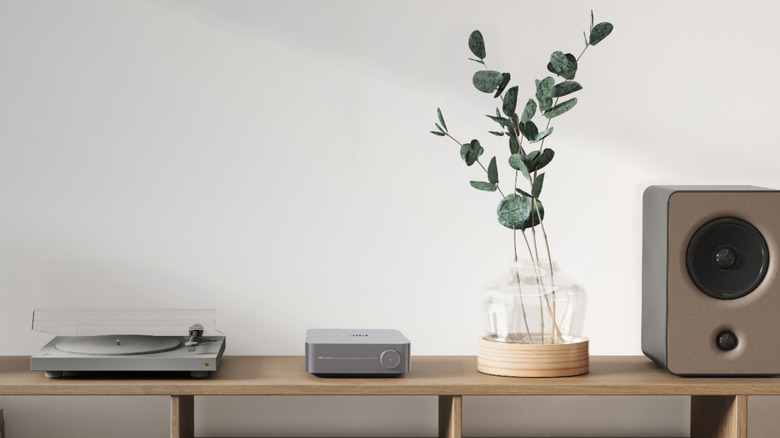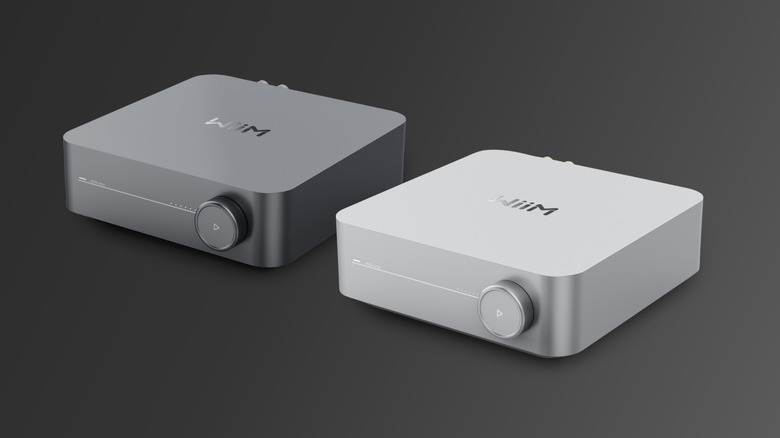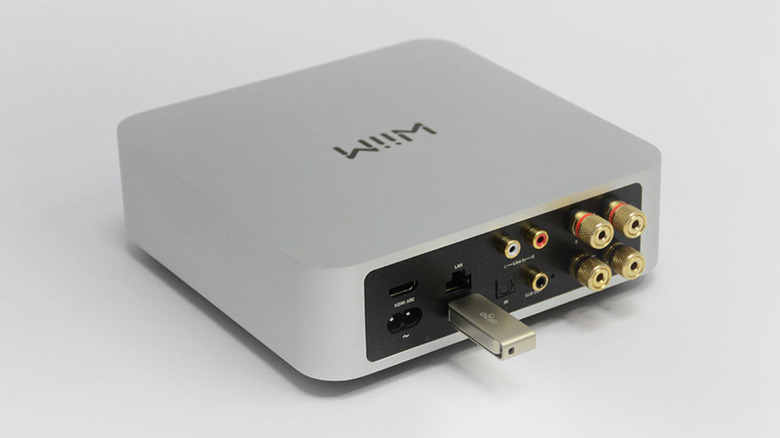This Audio Streaming Amp Could Breathe New Life Into Your Classic Hi-Fi Setup
Streaming music online is one of the toughest battles audiophiles regularly face due to the heavy compression and decompression leading to quality losses, which become more apparent when listening to a large speaker setup. If you're a purist, you could add a high fidelity (Hi-Fi) speaker setup to an analog source like a Blu-ray audio or a vinyl player for authentic studio-like audio — but only if you have enough room to store every vinyl disc you ever want to listen to.
For most others who have migrated to online streaming, Hi-Fi streamers solve part of the problem by adding analog output options. Meanwhile, amplifiers boost the signal chain further, readying it for passive speakers or home theater setups. While setting up a streamer and an amplifier separately can be costly and cumbersome, the recently launched WiiM (pronounced "whim") Amp combines the two, bringing a solution similar to the Sonos Amp but for only a fraction of its price.
The WiiM Amp takes the features of the older WiiM Pro (and Pro Plus) up a notch by adding a 60-watt Class-D amplifier backed by a Sony TI 3255 chip, resulting in up to 120W of output per channel when connected to 4-ohm speakers or 60W per channel for 8-ohm speakers. In addition to the amplifier chip, the WiiM Amp uses a Sabre ES9018 32-bit DAC from ESS to produce a 24-bit/192kHz audio signal, allowing it to process lossless audio streams or files.
Supports all major streaming services
The WiiM Amp shares many similarities with the amp-less WiiM Pro, including a broader streaming support than most competitors. It supports the best Hi-Fi music streaming services, such as Tidal, Deezer, Qobuz, Apple Music, and Amazon Music HD, as well as platforms such as Spotify, SoundCloud, TuneIn, Pandora, iHeartRadio, Napster, and Calm Radio. While other WiiM streamers also support multi-device media management platform, Roon, the Amp has yet to receive its certification.
In addition to direct streaming, you can cast audio directly from another device via Chromecast, Apple AirPlay, and Alexa Music Cast. If you fancy, you can connect a physical storage device using the USB port on the WiiM Amp and use it as a DLNA server.
Like other WiiM streamers, the Amp also gets Alexa built-in. Meanwhile, the bundled Bluetooth remote control lets you manage volume and playback as well as assign and utilize presets — or you can use the in-line microphone on the remote to command Alexa. Like the WiiM Pro, the WiiM Amp also gets a 100Mbps LAN port.
Besides, you can use the WiiM Home app to configure the EQ, choose between different input and output sources, browse your music libraries from numerous streaming apps, and manage your multi-room connection. The app also lets you control the Amp through Google Assistant (on Android) or Siri (on iOS) skills, allowing you to integrate your competent setup into routines powered by those virtual assistants.
What sets the WiiM Amp apart
Besides its similarities, the WiiM Amp has a reasonable number of distinctions, especially regarding physical input and output ports. First, there are two negative and two positive terminals for audio out through banana plugs and a separate subwoofer output. For input, there is an HDMI with ARC support, allowing you to use it with a TV or media player. It also gets a SPDIF-in port and RCA connectors for the left and right channels while skipping on RCA or a 3.5mm headphone jack for output, although you can connect headphones through Bluetooth.
Lastly, the WiiM Amp gets a physical knob in place of capacitive touch controls from the less powerful models. This knob allows you to control the volume by rotating the knob or play/pause media by pressing it inward. These controls are also available within the app.
For $299 on Amazon, the WiiM Amp is one of the most affordable Hi-Fi streamers with a built-in amp. More popular options in the segment offer similar functionality for nearly 10 times the price while still lacking the same degree of control or comprehensive support for services as WiiM.


